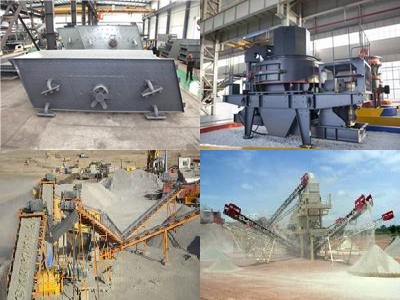Don't miss our holiday offer - 30% OFF!
What Should You Know About The Construction Of Jaw Crushers?

Jaw crushers are essential in the realm of heavy industrial equipment, serving as primary crushers in various mining and construction projects. Understanding their construction is pivotal for maximizing their efficiency and longevity. In this comprehensive guide, we delve into the intricacies of jaw crusher construction, from their fundamental components to the meticulous assembly process and ongoing maintenance requirements.
Introduction: Understanding Jaw Crushers
At the heart of every jaw crusher lies a set of crushing jaws, typically made of sturdy manganese steel. These jaws exert force onto the feed material, breaking it down into smaller particles suitable for further processing. Understanding the dynamics of these crushing jaws is crucial for optimizing the performance of the crusher. Additionally, the design of the crusher’s chamber plays a significant role in determining the size and quality of the final product.
Components and Mechanisms
Jaw crushers consist of several key components, each playing a vital role in the crushing process. The main components include the fixed jaw, the movable jaw, the toggle plate, and the eccentric shaft. The movement of the jaws is facilitated by the eccentric shaft, which transfers power from the motor to the crushing mechanism. Understanding the interplay between these components is essential for diagnosing and resolving any operational issues that may arise.
Construction Process: From Blueprint to Assembly
The construction of a jaw crusher involves meticulous planning and precision engineering. It begins with the creation of detailed blueprints that outline the dimensions and specifications of the crusher. Next, skilled craftsmen fabricate the various components, ensuring they meet the highest quality standards. Assembly is a meticulous process that requires attention to detail, as even the slightest misalignment can affect the crusher’s performance. Once assembled, the crusher undergoes rigorous testing to ensure it meets safety and performance requirements before being deployed in the field.
Maintenance and Performance Optimization
To ensure the longevity and efficiency of a jaw crusher, regular maintenance is paramount. This includes inspecting and lubricating the various components, as well as replacing worn parts as needed. Additionally, operators should monitor the crusher’s performance and adjust settings accordingly to optimize productivity and minimize downtime. By adhering to a comprehensive maintenance regimen, operators can maximize the lifespan of their jaw crusher and ensure it operates at peak performance.
In conclusion, understanding the construction of jaw crushers is essential for anyone involved in the mining or construction industries. At Zenith, we offer a range of high-quality jaw crushers designed to meet the rigorous demands of heavy-duty crushing applications. Our products are engineered with precision and built to last, ensuring maximum productivity and efficiency for our customers. Explore our jaw crusher offerings today and experience the Zenith difference.